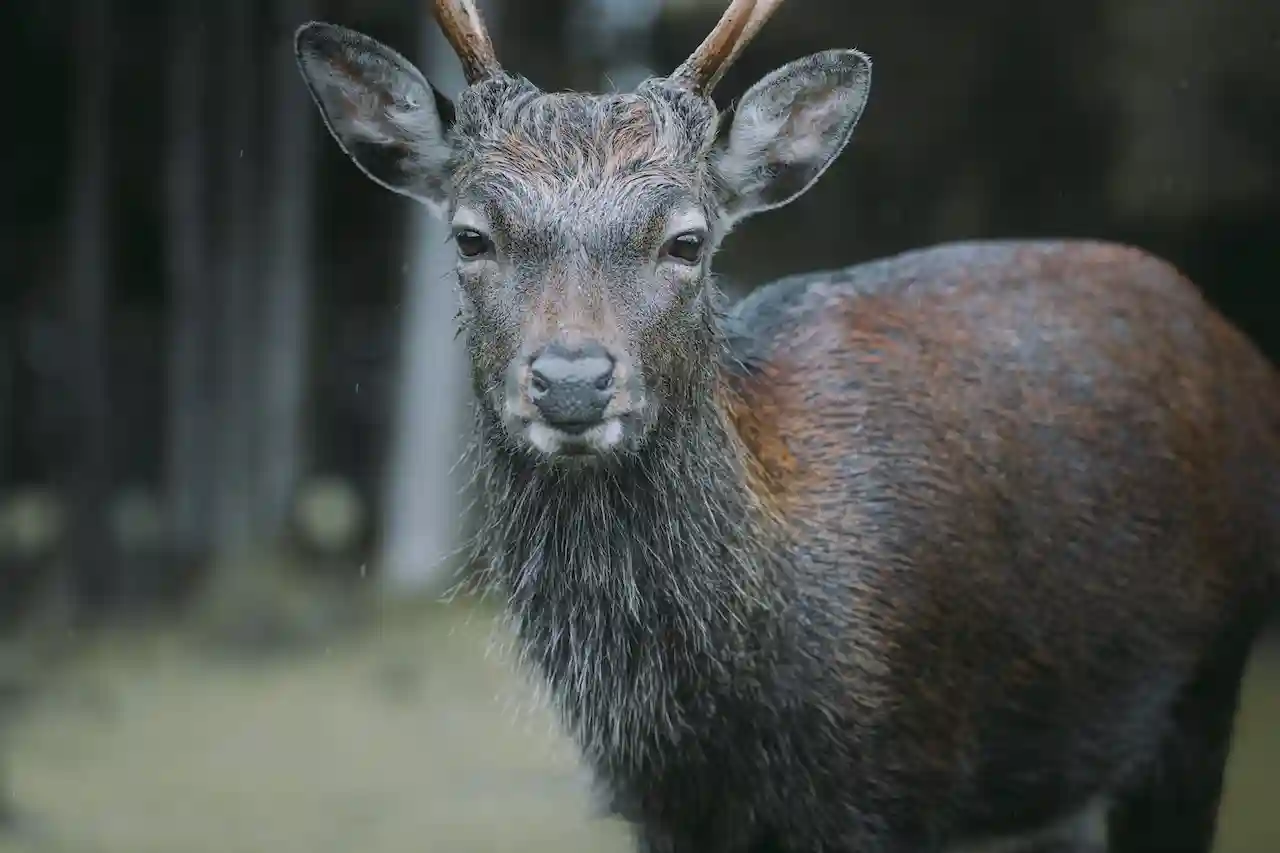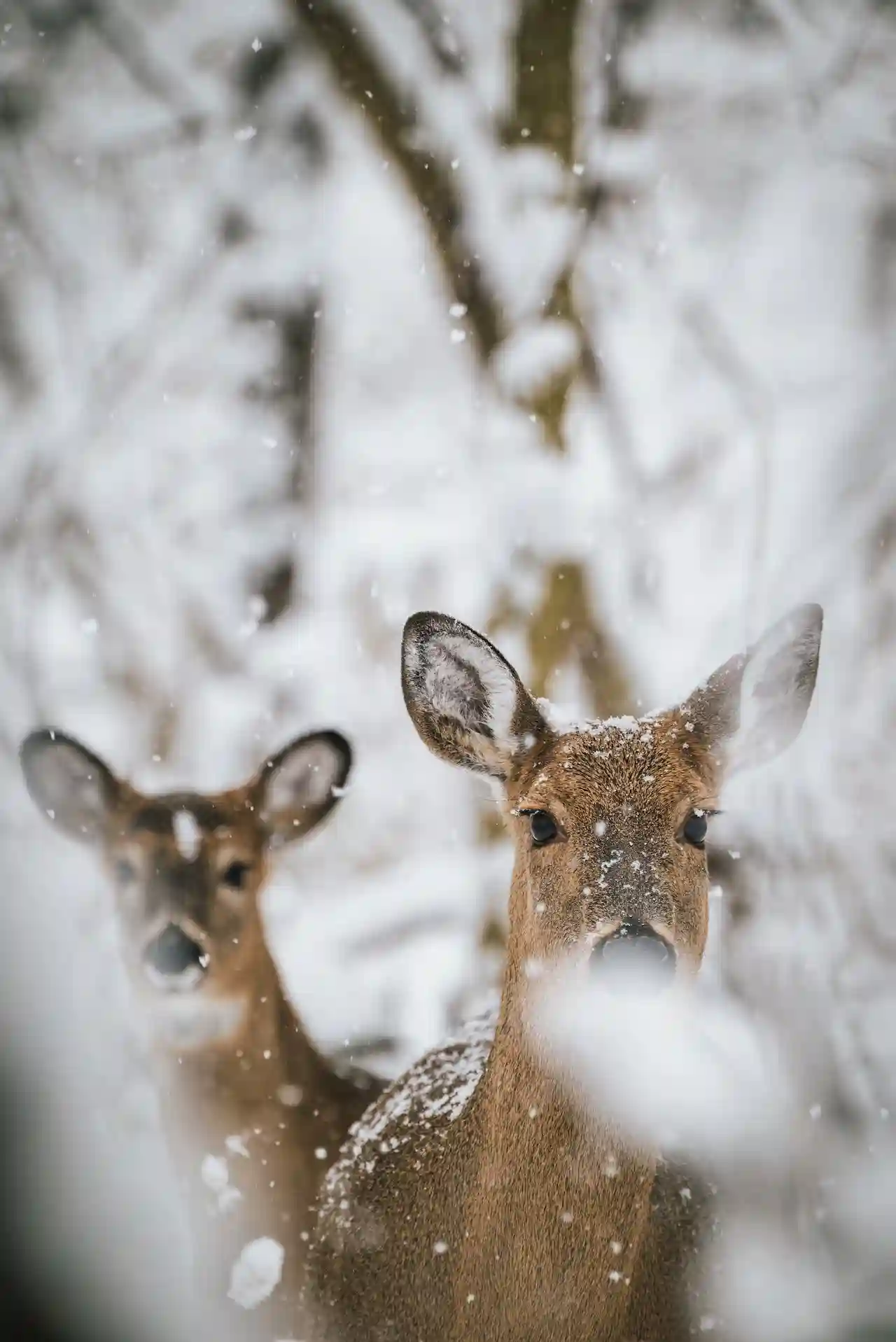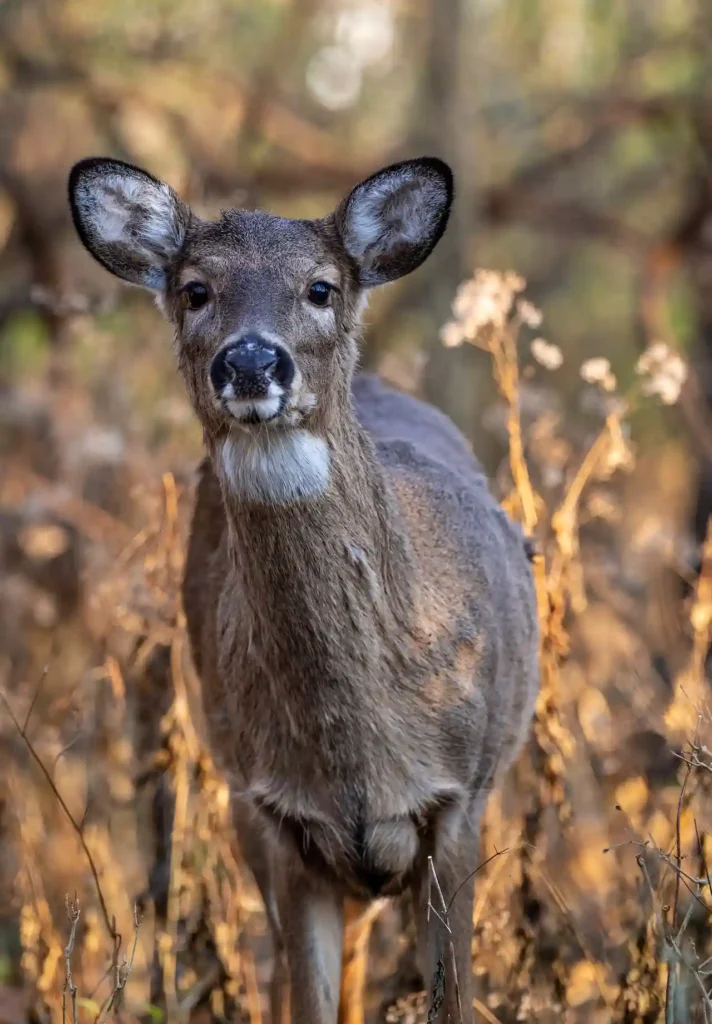
As we already know, a crossbow is a new type of weapon that shoots projectiles, and there are horizontal limbs attached to a stock. Nowadays, many deer hunters are buying crossbows instead of a
rifles, and it is really famous in the market because it is effortless to use.
We already have knowledge of the complexity of the weapon, so there are many crossbow parts, and as deer hunters, we should identify and understand the main purposes of these components. Also, you can read about the different brands of these parts and lists for each part of these famous brands you can find in the market.
Crossbow Parts and Their Sub Parts For Deer Hunters
Crossbow parts are really common in the market, and you can get a hold of one easily. You can easily find them at any archery and sports shops.
In this article, we will discuss all the main parts of it.
Crossbow Stock
The topmost part in our list is stock. From the name, you can judge that the stock is the main body of it that holds all the other parts together. It may be made from several materials such as metal, plastic, or wood. It typically consists of three more main parts
Foregrip
Firstly, we will discuss the foregrip. The foregrip is the front part of the stock where the user can grip the crossbow with their non-dominant hand. Moreover, it helps to stabilize the crossbow while aiming and shooting.
Trigger housing
It is the second part and the middle part of the stock where the trigger mechanism is located. It is typically made of metal and includes the trigger, sear, safety mechanism, and as well as other parts that control the firing of the weapon.
Buttstock
The buttstock is the rear part of the stock where the user places their shoulder to absorb the recoil when firing the crossbow. It can be made of various materials such as wood or synthetic materials, and may include a recoil pad to cushion the shoulder from the impact.

The buttstock may also have an adjustable cheekpiece to help the user align their eye with the sight. Furthermore, the stock may include other features such as a Picatinny rail for mounting accessories, a cocking aid or crank for easier cocking, or an adjustable stock for different users’ body sizes.
Crossbow Limbs
In our list, the second more important component is the limb. The limbs are the most critical part of a crossbow and are responsible for storing the energy that propels the arrow or bolts forward. They are made of different materials such as wood, fiberglass, or carbon fiber. There are two limbs in a crossbow, one on each side of the stock, and they typically consist of the following parts.
Prod
First comes the prod. The prod is the main body of the limb and is usually made of fiberglass or carbon fiber. It is curved or bent in the middle to create tension when the bowstring is drawn back.
Tips
Secondly, we will provide you with information about the tips of limbs. The tips of the limb are the ends that connect to the stock and hold the bowstring. There are two types of tips, recurve tips, which curve away from the archer, and compound tips, which are straight.
Limb pocket
The limb pocket is part of the stock that holds the tips of the limb in place. It is usually made of metal and can be adjustable to accommodate different limb sizes or tensions.
Cam or pulley
Some modern crossbows may include a cam or pulley system in the limbs that help to reduce the draw weight required to cock the crossbow. The cam or pulley can increase the speed and accuracy of the arrow or bolt when you fire. You should know them as a deer hunter.
Silencers/Limb Dampeners
The limbs may also include other features such as limb dampeners or silencers, and from the name of this part, we can easily judge that it is used to reduce the noise and vibration when firing the crossbow.
Bowstring
The bowstring is a vital component of the
crossbow that is responsible for transferring the stored energy from the limbs to the arrow or bolt. It is typically made of high-strength synthetic fibers such as Dacron or Dyneema. The bowstring typically consists of the following sections. It is an important one for a deer hunter.

String Material
The top of the list and the most important is string material. It is the material that you use to construct the bowstring. You can maek it of high-strength synthetic fibers such as Dacron, Spectra, or Dyneema. We should buy a bow with good string material.
Center Serving
The center serving is a thicker section of the bowstring that covers the area where the arrow or bolt will rest. It is typically made of a durable material such as nylon or Kevlar to protect the string from abrasion.
Nock serving
The nock serving is a section of the bowstring that covers the area where the arrow or bolt will be nocked or fitted. It is usually made of a softer material such as polyester to provide a better grip on the arrow or bolt.
End loops
The end loops are the two loops at the end of the bowstring that you can use to attach the string to the tips of the limbs. They are usually reinforced with additional strands of material to increase their strength.
Cocking Aid
Some modern crossbows may also have a cocking aid or crank that helps the user to draw the bowstring back more easily
The bowstring may also include other features such as string silencers or dampeners to reduce noise and vibration when firing the crossbow.
Trigger Mechanism
The trigger mechanism releases the bowstring and shoots the arrow or bolt. It consists of a trigger, sear, and safety mechanism. It normally contains the following parts:
Trigger
The trigger is part of the mechanism, which the user pulls to release the bowstring and fire the weapon. It is just like a rifle trigger. The trigger is present at different places in different crossbows. In some of them, it is below the latch, and in some, it is in front of it.
Sear
The sear is a small component that holds the bowstring in place until you pull the trigger. When you pull it, the sear releases the bowstring, which allows it to fly forward.
Safety Mechanism
The safety mechanism is a feature that prevents the accidental firing of the crossbow. It can be a switch or lever that blocks the trigger or a mechanism that prevents the bowstring from moving until the safety is released.
Trigger spring
The trigger spring is a small spring that helps to return the trigger to its original position after you pulled it.
Latch

Latch helps you to pull the bowstring back without any effort and extra strength. The trigger mechanism may also include features as an anti-dry fire mechanism that prevents the bowstring from firing if there is no arrow or bolt in place.
Some modern weapons may also have a trigger pull weight adjustment that allows the user to adjust the amount of force required to pull the trigger.
Deer Hunting Crossbow Sight
A sight is a device that helps the user aim the crossbow accurately. It is helpful during hunting and increases aiming accuracy. Also, it enhances the vision. You can find it as a simple bead or a more complex optical sight like a pin, peep, range, and red dot. It comprises the following components.
Rear sight
Firstly, It is the rear sight. The rear sight is located at the back of the weapon and is used for rough aiming. It can be a simple notch or a more complex aperture sight with adjustable windage and elevation.
Front Sight
Secondly, it is the front sight. You can find the front sight at the front of the crossbow, and you can use it for more precise aiming. It can be a simple post or a more complex fiber optic sight that helps the user to acquire the target quickly.
Scope
Some modern ones may include a scope, which is a type of optical sight that magnifies the target and provides a clearer image. The scope can be mounted on a Picatinny rail on top of the crossbow and can be adjusted for windage, elevation, and focus.
The sight may also include other features such as illuminated reticles or rangefinders that help the user estimate the distance to the target. Some of these may also have a red dot sight or a holographic one that projects an aiming point onto the target.
Sight Bridge
The place where you attach the crossbow sight is called the sight bridge. It plays a vital role in any such weapon. Also, it offers the foundation and helps to get accuracy. The sight bridge is made up of metal.
Crossbow Quiver
If we talk about a quiver, then it is a container that holds extra arrows or bolts. It can be attached to the crossbow or carried separately. You can find the following sections in this one.
Body of the Quiver
The body of the quiver is the main compartment that holds the arrows or bolts. It can be made of various materials such as plastic, leather, or fabric.
Arrow or bolt holder
The arrow or bolt holder is part of the quiver, which holds the arrows or bolts in place. It can be of foam, rubber, or other materials that provide a secure grip on the arrows or bolts.
Mounting system
The mounting system is part of the quiver that attaches it to it. It can be a simple clip or a more complex system that allows the user to adjust the angle and position of the quiver.
Lid or cover

Some quivers may have a lid or cover that protects the arrows or bolts from dust, dirt, and moisture. Moreover, the quiver may include other features, like additional compartments for storing accessories such as broadheads or field points.
Some of these may have an integrated quiver, which is attached directly to the crossbow stock, while others may have a detachable quiver that you can remove when not in use.
Foot Stirrup
The foot stirrup is a part of the weapon that helps the user to cock the bowstring by placing their foot in it and pulling the string back. It normally contains the following sections
Stirrup body
The stirrup body is the main component of the foot stirrup and comes of metal or durable plastic. Its design allows it to withstand the force required to cock it.
Treads
The treads are the textured surfaces on the top of the foot stirrup that provide traction for the user’s foot. They can be of rubber, plastic, or other materials that provide a non-slip grip.
Attachment points
The attachment points are the parts of the stirrup that attach it to the crossbow. You can find them in the material options of metal or plastic, and are designed to withstand the force required to cock it.
The foot stirrup is an important safety feature of the weapon, as it helps the user to maintain balance and control when cocking it. Some modern crossbows may also have a built-in crank or cocking aid that eliminates the need for a foot stirrup.
Bolt or Arrow
We all knwo what is an arrow or a bolt. If you want to be nerdy, you can call it the projectile you can shoot from the weapon. It typically has a pointed tip and fletching (feathers or vanes) at the back to stabilize its flight. It has four different components
Shaft
The shaft provides stability and accuracy during the flight of the arrow. Shaft is the long part of the arrow. It can come from various materials such as carbon fiber, aluminum, or wood.
Fletching
The fletching is the feathers or plastic vanes attached to the back of the bolt or arrow that provide stability and help to keep it on course in flight.
Nock

The nock is the small, plastic, or metal piece at the back of the bolt or arrow that snaps onto the bowstring and holds the bolt or arrow in place until you fire it.
Point
The point is the sharp, pointed tip of the bolt or arrow that is designed to penetrate the target. It can be a broadhead, field point, or another type of tip depending on the intended use.
Crossbow Brnads And Their Parts
When it comes to the types of these weapons, we find a wide range to use. So, knowing them all can be a real help to find the best choice for your type of expedition. Here are some types and their parts covered in detail:
Killer Instinct Crossbow Parts For Hunters

There are some common ones when it comes to this weapon, like:
- Bow slings that come in different models
- Crank sled
- Rope cocker
They all work with their own functions, like a rope cocker allows you to cock your bow. Also, you can use crank sled to reduce the resistance you get during this process. At the same time, you have to use slings to ensure you can easily and comfortably carry the weapon.
Barnett Crossbow Parts
This weapon also has these essential ones you need to know and carry during your expeditions, like:
- Retainer holder springs that help arrow bolt retention
- Also, you have to carry a cable slide replacement
- Make sure you have folding foregrip in your inventory as well
- Crank cocking handle
- Replacement bolt arrow
- Crank cocking device replacement
- Lubes
Parker Crossbow Parts
Also, if you are carrying this weapon, you need to have the following:
- The limbs are the most common part when it comes to using such a weapon
- Cables and strings make the most exciting part of your weapon
- Front ends
- Limb assemblies
- Also, you should ensure to know risers
Centerpoint Crossbow Parts
They are among most famous providers and hustlers in this niche and have been hustling well. Some top parts for their weapons are:
- You must be familiar with their strings
- Also, you should know about their cables
- Cable slides
- Limb dampeners
- String stops
- Retention springs
- Be sure you find out about their string dampers as well.
- Also, you should know about their string stop
- These weapons also need your cable, string and stop kits.

Final Thoughts
In the end, I just want to conclude that crossbows are a great trend in the market, and you can definitely give them a try for thrill. I tried my best to help you understand all the major parts of a crossbow and their functions. These lists of brands and their weapon parts of deer hunters can make a big difference in their expeditions.
FAQs
Which part helps to prevent the crossbow from slipping?
The part of a crossbow that helps it from preventing and keeps it in place is stirrup.
Which part of the crossbow helps to increase its accuracy?
The sights of the crossbow help a lot to increase the accuracy and help in to measure the distance of the target. This way, you can be sure how you can aim on the deer.
What do we call the arrow of the crossbow?
The crossbow arrow is called a bolt or quarrel, and it is like a dart.
Where can we attach silencers and dampeners on a crossbow?
You can use silencers and dampeners on the limbs and strings of the weapon.
Which material can be used to make a crossbow stock?
The stock can be made up of wood and synthetic material.
 As we already know, a crossbow is a new type of weapon that shoots projectiles, and there are horizontal limbs attached to a stock. Nowadays, many deer hunters are buying crossbows instead of a rifles, and it is really famous in the market because it is effortless to use.
We already have knowledge of the complexity of the weapon, so there are many crossbow parts, and as deer hunters, we should identify and understand the main purposes of these components. Also, you can read about the different brands of these parts and lists for each part of these famous brands you can find in the market.
As we already know, a crossbow is a new type of weapon that shoots projectiles, and there are horizontal limbs attached to a stock. Nowadays, many deer hunters are buying crossbows instead of a rifles, and it is really famous in the market because it is effortless to use.
We already have knowledge of the complexity of the weapon, so there are many crossbow parts, and as deer hunters, we should identify and understand the main purposes of these components. Also, you can read about the different brands of these parts and lists for each part of these famous brands you can find in the market.
 The buttstock may also have an adjustable cheekpiece to help the user align their eye with the sight. Furthermore, the stock may include other features such as a Picatinny rail for mounting accessories, a cocking aid or crank for easier cocking, or an adjustable stock for different users’ body sizes.
The buttstock may also have an adjustable cheekpiece to help the user align their eye with the sight. Furthermore, the stock may include other features such as a Picatinny rail for mounting accessories, a cocking aid or crank for easier cocking, or an adjustable stock for different users’ body sizes.

 Latch helps you to pull the bowstring back without any effort and extra strength. The trigger mechanism may also include features as an anti-dry fire mechanism that prevents the bowstring from firing if there is no arrow or bolt in place.
Some modern weapons may also have a trigger pull weight adjustment that allows the user to adjust the amount of force required to pull the trigger.
Latch helps you to pull the bowstring back without any effort and extra strength. The trigger mechanism may also include features as an anti-dry fire mechanism that prevents the bowstring from firing if there is no arrow or bolt in place.
Some modern weapons may also have a trigger pull weight adjustment that allows the user to adjust the amount of force required to pull the trigger.
 Some quivers may have a lid or cover that protects the arrows or bolts from dust, dirt, and moisture. Moreover, the quiver may include other features, like additional compartments for storing accessories such as broadheads or field points.
Some of these may have an integrated quiver, which is attached directly to the crossbow stock, while others may have a detachable quiver that you can remove when not in use.
Some quivers may have a lid or cover that protects the arrows or bolts from dust, dirt, and moisture. Moreover, the quiver may include other features, like additional compartments for storing accessories such as broadheads or field points.
Some of these may have an integrated quiver, which is attached directly to the crossbow stock, while others may have a detachable quiver that you can remove when not in use.
 The nock is the small, plastic, or metal piece at the back of the bolt or arrow that snaps onto the bowstring and holds the bolt or arrow in place until you fire it.
The nock is the small, plastic, or metal piece at the back of the bolt or arrow that snaps onto the bowstring and holds the bolt or arrow in place until you fire it.
 There are some common ones when it comes to this weapon, like:
There are some common ones when it comes to this weapon, like:


